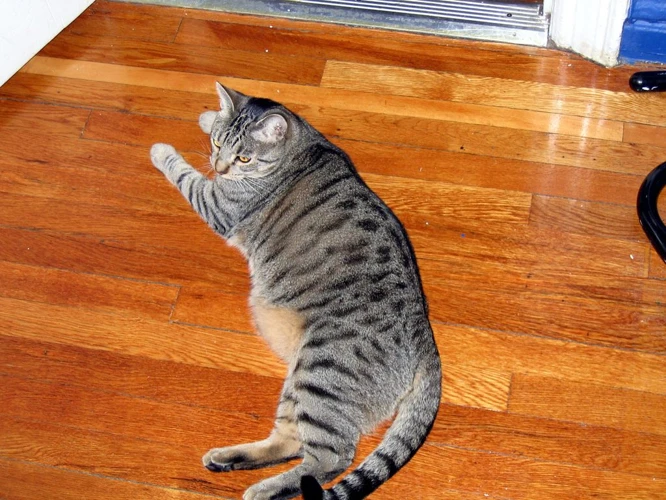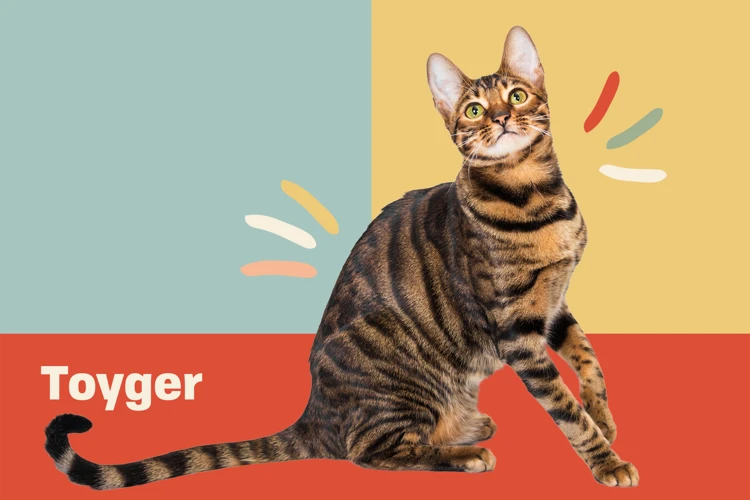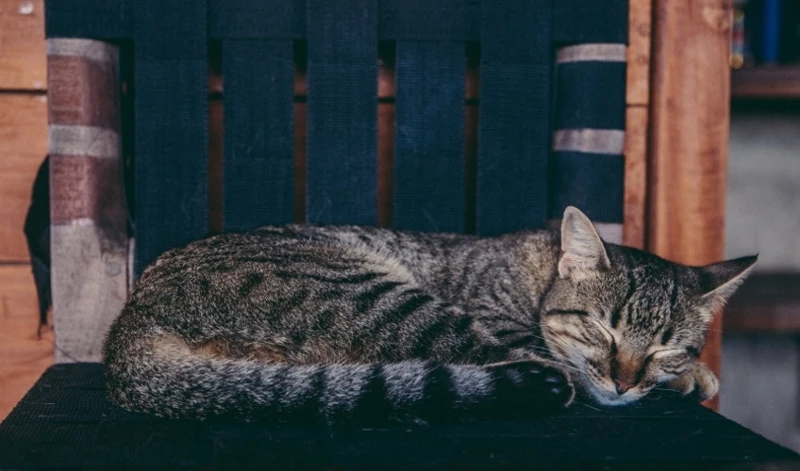As a California Spangled cat owner, you may find yourself struggling with teaching basic commands to your feline friend. Fortunately, clicker training can be a highly effective and rewarding method. However, understanding the ins and outs of clicker training can be overwhelming. That’s where this guide comes in. In this article, we’ll walk you through the basics of clicker training, including how it works and how to prepare for it. We’ll also dive into step-by-step instructions for teaching basic commands like sit, come, stay, and down. And if you’re already familiar with clicker training, we’ve got you covered with advanced techniques like targeting, shaping, and chaining. So don’t worry if you’re feeling perplexed – by the end of this guide, you’ll be well on your way to training your California Spangled cat like a pro.
Understanding Clicker Training

If you’re looking to teach basic commands to your California Spangled cat, clicker training can be a highly effective tool. Understanding Clicker Training is crucial for learning how to properly train your feline companion. Clicker training is a positive reinforcement training method that can help build a stronger bond between you and your furry friend. In this section, we’ll delve into the basics of clicker training, its benefits, and how it works. To learn more about the benefits of clicker training for California Spangled cats, you can check out this article.
What is Clicker Training?
Clicker training is a positive reinforcement training method that involves using a handheld device that makes a distinct clicking sound. This sound serves as a marker or cue that signals to the cat that they have done something correctly and a reward is coming. Clicker training has been proven to be an effective and efficient training method for California Spangled cats, as it allows for clear communication and faster learning for your furry friend.
In clicker training, the desired behavior is marked by the sound of the click and is followed promptly by a reward, such as a treat or a toy, which reinforces the behavior and increases the likelihood that the cat will repeat the behavior in the future. This type of training focuses on positive reinforcement, making it an ideal training method for California Spangled cats who do not respond well to punishment-based training.
Positive reinforcement training is a gentle and effective way to teach basic commands to your California Spangled cat, and clicker training is at the heart of this approach.
Using a clicker is a versatile training method that can be used to teach cats a variety of new behaviors, including basic commands such as sit, come, stay, and down, as well as more advanced behaviors such as targeting, shaping, and chaining.
To get started with clicker training, you will first need to gather some supplies, create a positive training environment, and introduce your cat to the clicker. Once your cat is comfortable with the clicker, you can begin teaching basic commands. However, it is important to keep in mind that every cat is unique, and some may require more time and patience than others when learning new behaviors.
For more information on clicker training tips specifically tailored to California Spangled cats or to learn about common mistakes to avoid when clicker training, check out these informative articles: cali-spangled-clicker-training-tips and clicker-training-california-spangled-cats-mistakes. For more advanced clicker training techniques, consider exploring adv-clicker-training-cali-spangled-cats.
Research in the field of animal behaviorism also supports the effectiveness of clicker training for California Spangled cats, which is based on the principles of operant conditioning. If you’re interested in learning more about the science behind clicker training, check out this informative article: sci-clicker-training-california-spangled-cats.
By using positive reinforcement and clicker training techniques, you can teach your California Spangled cat new behaviors and strengthen the bond between you and your beloved feline friend.
How Does Clicker Training Work?
Clicker training works by using a sound, typically a “click” made by pressing the clicker device, to signal to the cat that they have done something correctly and that a reward is coming. This technique is called positive reinforcement, where desirable behavior is rewarded to encourage repetition of that behavior.
The process of clicker training for California Spangled cats:
- First, the desired behavior is identified, such as sitting or coming when called.
- Next, the cat must perform the behavior on its own, without prompting.
- When the cat performs the desired behavior, the clicker is immediately pressed to signal that the behavior was correct.
- After clicking, a reward is given to the cat’s preferred reward system, such as a treat or toy, to reinforce the behavior.
- The process is repeated until the cat consistently performs the desired behavior in response to the clicker signal.
Clicker training is different from traditional training methods because it is a reward-based system rather than a punishment-based approach. Punishments can lead to distrust or fear in cats, whereas rewards help foster a positive relationship between the cat and owner.
Using clicker training can also help reduce fear and anxiety in California Spangled cats. Since it is a gentle and gradual training technique, cats can learn at their own pace without feeling rushed or overwhelmed. It helps build the cat’s confidence as they learn new behaviors and receive praise and rewards for their efforts.
Want to learn more about clicker training for California Spangled cats? Check out our article on Cali Spangled clicker training to learn more about the benefits of this type of training. If you’re curious about how clicker training compares to traditional training methods, read our article on clicker training vs traditional training for California Spangled cats. And if you’re struggling with a cat that has fear and anxiety, our article on training a California Spangled cat with fear and anxiety using a clicker can help.
Preparing for Clicker Training

Before you begin clicker training with your California Spangled cat, you need to prepare and set up the right environment for success. This stage is crucial as it creates a positive experience for both you and your feline friend. By gathering the necessary tools, creating a calming space to train in, and introducing the clicker properly, you can set your cat up for success and make the training experience much more enjoyable. In this section, we will discuss how to prepare for clicker training and how to create a comfortable and positive environment for your cat.
Gather Supplies
Before starting your California Spangled Cat’s clicker training, it’s essential to gather all the necessary supplies. Having everything on hand will make the training process run more smoothly for both you and your furry friend. Here are some of the essential supplies that you’ll need:
- Clicker: This is the most crucial tool you’ll need for clicker training. It’s a small device that makes a distinctive ‘click’ sound when you press the button. You can find clickers at most pet stores or online.
- Treats: Your cat will be more motivated to learn if you use treats as positive reinforcement. Pick a treat that your cat loves, such as small pieces of chicken or freeze-dried fish.
- Mat: A mat serves as your cat’s designated spot during training. It can be as simple as a towel or a more substantial pad. This will help your cat understand where to be during the training.
- Leash and Harness: You’ll need a leash and harness if you plan to train your cat to walk on a leash. It’s essential to start with a comfortable harness that fits correctly.
- Bowl of Water: Always have a bowl of water available for your cat during training. Positive reinforcement will make your cat thirsty, and they should have water nearby.
- Favorite Toys: Keep your cat’s favorite toys nearby. You can use them to reward good behavior or to play with after the training is over.
With these supplies on hand, you’ll be ready to start clicker training your California Spangled Cat. Remember to keep the training sessions short and positive, always rewarding good behavior with treats and praise.
Creating a Positive Environment
Teaching your California Spangled cat basic commands with clicker training requires a positive environment for them to feel comfortable and focused. A positive environment consists of various elements that you need to consider before starting training sessions. Let’s look at some of these elements below:
| No Distractions | The training environment should be free from any distractions that may cause your cat to lose focus. Keep the training area as quiet as possible and ensure that no other animals or people are around to distract your cat. |
| Comfortable Space | Make sure that your California Spangled cat is comfortable during the training sessions. Provide a suitable spot or bed where they can rest when they need to take a break. This way, they will feel safe and relaxed during the training. |
| Reward System | A reward system is essential in clicker training as it reinforces positive behavior. Choose treat options that your cat loves and will be motivated to work for. Small pieces of tuna or chicken are good options to consider. |
| Positive Reinforcement | If you use negative reinforcement, such as scolding or hitting, it may cause your cat to become anxious and fearful during training sessions. Instead, reward your cat with positive reinforcement, such as treats and verbal praise, whenever they respond correctly to the clicker. |
| Fun and Engaging | Make sure training sessions are enjoyable and engaging for your California Spangled cat by incorporating activities that they find interesting. You can use toys or interactive games to make training more fun and as a way to keep them stimulated and focused. |
Creating a positive training environment is crucial in helping your cat learn new commands easily. Ensure that they feel comfortable, motivated, and safe throughout the training sessions. By doing this, your cat will be more excited to learn, and they will respond better to clicker training.
Introducing the Clicker
One of the most important steps in clicker training your California Spangled cat is to introduce the clicker. The clicker serves as a signal to your cat that he has done something correctly and that he will be rewarded. Here are some steps you can take to introduce the clicker to your cat:
- Step 1: Choose a quiet and distraction-free environment for the training session.
- Step 2: Get your cat’s attention by calling his name or using a treat.
- Step 3: Press the clicker and immediately offer a treat to your cat. Repeat this process several times, so your cat associates the sound of the clicker with receiving a treat.
- Step 4: Observe your cat’s reaction to the clicker. Some cats may be startled by the sound at first, while others may be indifferent. If your cat is scared of the sound, try using a softer clicker or muffling the sound with your hand or a towel until he gets used to it.
- Step 5: Practice with the clicker several times a day, gradually increasing the distance between you and your cat. The goal is for your cat to respond to the sound of the clicker, regardless of where he is in the room.
It’s important to be patient and consistent with your training. Some cats may pick up on clicker training quickly, while others may take longer. The key is to use positive reinforcement techniques and to make the training sessions fun and engaging for your cat. With a little bit of time and effort, you can teach your California Spangled cat a variety of basic commands using clicker training.
Teaching Basic Commands

Teaching your California Spangled cat basic commands is an essential part of their training. Not only does it provide mental and physical stimulation, but it also helps to establish clear communication and a deeper bond between you and your feline friend. In this section, we’ll cover some of the essential commands every cat should know, and provide step-by-step guidance on how to teach them through clicker training. With consistent practice and positive reinforcement, your California Spangled cat is sure to become an obedient and well-behaved companion. Let’s get started!
Sit
Training your California Spangled cat to sit is one of the easiest commands to teach. Follow these simple steps to get started:
- Begin by getting your cat’s attention by saying their name.
- Hold a treat just above their nose and slowly move it towards their back.
- As your cat follows the treat and begins to sit, say the command “sit” in a clear and firm tone.
- Once your cat is in a sitting position, praise them immediately and give them the treat.
Training Tips:
- Make sure to use a high-value treat that your cat loves to motivate them.
- Use positive reinforcement by praising and rewarding your cat every time they successfully complete the command.
- Practice this command several times a day in short sessions to keep your cat engaged and motivated.
- Be patient and consistent with your training. It may take several sessions for your cat to fully grasp the command.
Remember to keep the training sessions fun and enjoyable for both you and your cat. With time and patience, your California Spangled cat will be sitting on command in no time.
Come
Teaching your California Spangled cat to come to you on command is an important part of clicker training. This command can be useful in a variety of situations, such as calling your cat indoors or having them come to you for feeding time. Here are the steps you can follow to teach your cat to come when called:
- Choose a Distinct Cue: Choose a word or sound that you will consistently use to signal your cat to come. It could be as simple as saying “come” in a happy tone of voice. Be sure to use the same cue every time, so your cat will learn to associate that word with coming to you.
- Start Indoors: Begin training your cat to come indoors, in a quiet and familiar area without any distractions. Start by using the chosen cue and offering a treat when your cat comes to you. Gradually increase the distance between you and your cat, but be sure to always reward them with a treat when they come to you.
- Move Outdoors: Once your cat has mastered coming to you indoors, move outside to a secure, enclosed area. Begin with a short distance and gradually increase the distance over time. Be sure to use the same cue as you did indoors and reward your cat with plenty of treats and praise when they come to you.
- Practice Regularly: Consistency is key when training your cat to come on command. Practice the command every day, gradually moving to more distracting areas. Remember to always use the same cue, offer positive reinforcement when your cat comes to you, and never punish them for not responding.
It’s important to note that some California Spangled cats may be more independent and less interested in following commands than others. As with any training, it’s important to be patient and adjust your approach as needed to suit your cat’s personality and learning style. With patience, consistency, and positive reinforcement, you can teach your California Spangled cat to come when called and improve your bond with them.
Stay
Teaching a California Spangled cat to “stay” is an important command for their safety. Here are the steps you can follow to teach your cat the “stay” command using clicker training.
| Step 1: | Put your cat in a sit position using the command you taught in the previous section. |
| Step 2: | Hold your hand up in front of your cat’s face with your palm towards them while saying “stay”. |
| Step 3: | While holding your hand up, take a step back. If your cat stays in the sit position, click the clicker and give them a treat. |
| Step 4: | If your cat gets up from the sit position, simply put them back in the correct position and start over. Repeat the process a few times per session or until your cat has mastered it. |
| Step 5: | You can now start to gradually increase the distance between you and your cat while they remain in the sit position and stay. This will help improve their self-control and obedience. |
It’s important to remember to always praise and reward your cat when they successfully complete the “stay” command. Be patient and consistent with your training, and eventually your California Spangled cat will be able to stay in place for longer periods of time.
Down
Teaching your California Spangled Cat to lie down on command can be a useful tool for managing their behavior. Here’s a step-by-step guide to help you teach your cat to “down” using clicker training:
| Step | Description |
|---|---|
| 1 | Start with your cat in a “sit” position. |
| 2 | Hold a treat in front of your cat’s nose and slowly move it down towards the ground. This should naturally encourage them to lower their body and eventually lie down. |
| 3 | As soon as your cat lies down, click the clicker and give them the treat. |
| 4 | Repeat this process several times until your cat starts to associate the click with the behavior of lying down. |
| 5 | Once your cat is consistently lying down on command, you can start to introduce the verbal cue of “down”. Say the word “down” and immediately use the same hand signal as before. This will help your cat recognize the verbal command. |
| 6 | Practice the “down” command in a variety of settings, including different rooms in your house or outside. This will help ensure that your cat understands the command regardless of their surroundings. |
| 7 | Gradually decrease the frequency of treats and only reward your cat periodically to maintain their behavior of lying down when you say the “down” command. |
Remember that patience is key when teaching your California Spangled Cat any new command. It may take several sessions before they start to respond consistently, so don’t get frustrated if progress is slow. Additionally, never punish your cat if they do not respond correctly. Instead, calmly redirect their behavior and try again later. With patience and persistence, you’ll soon have a cat that responds to your every “down” command!
Training Tips
When it comes to clicker training your California Spangled cat, there are a few tips to keep in mind to ensure success. Here are some useful training tips:
- Keep Training Sessions Short and Frequent: Cats have short attention spans and can easily become bored or distracted, so it’s best to keep training sessions short and frequent. Aim for 5-10 minutes per session, and try to train at least once a day.
- Always End on a Positive Note: It’s important to end each training session on a positive note, even if your cat didn’t perform the desired behavior. This helps to keep your cat engaged and motivated for the next training session.
- Use High-Value Treats: Using high-value treats, such as small pieces of cooked chicken or tuna, can help to keep your cat motivated and focused during training sessions. It’s important to use treats that your cat really loves and doesn’t get on a regular basis.
- Be Patient: Cats learn at their own pace, and it’s important to be patient and not get frustrated if your cat doesn’t understand a behavior right away. Keep practicing and rewarding small successes, and eventually your cat will get it.
- Stay Positive and Encouraging: Your cat can pick up on your emotions, so it’s important to stay positive and encouraging throughout the training process. If you get frustrated or angry, your cat may become anxious or scared, making it harder to train.
- Avoid Punishment: Punishing your cat for not performing a behavior can be counterproductive and damage the trust between you and your cat. Instead, focus on positively reinforcing good behavior and ignoring or redirecting unwanted behavior.
By following these training tips, you can ensure a positive and effective clicker training experience for you and your California Spangled cat. Remember that each cat is unique and may respond differently to training, so be flexible and adapt your training techniques as needed.
Advanced Clicker Training Techniques

Now that you and your California Spangled cat have successfully mastered the basic clicker training techniques, it’s time to take things to the next level. With advanced clicker training techniques, you can introduce your feline friend to more complex behaviors and actions. These techniques allow you to go beyond the basic commands, and provide your cat with more stimulating and challenging activities that will keep them mentally and physically engaged. In this section, we will explore some of the most effective and exciting advanced clicker training techniques that you can use to take your cat’s training to the next level.
Targeting
Targeting is an advanced clicker training technique used to teach cats to touch a specific object with a specific part of their body. This technique can be useful for training your California Spangled Cat to perform more complex tricks. Here are the steps to teaching targeting:
Choose an object that is safe for your cat to touch, such as a small ball or a stick. Hold the target in front of your cat.
When your cat touches the target with their nose or paw, click the clicker and give them a treat.
Repeat the process until your cat consistently touches the target with their nose or paw.
Once your cat is consistently touching the target, you can add a verbal cue such as “touch” or “target” before presenting the object.
Using targeting can also help improve your cat’s coordination and focus. Just like any other training exercise, patience is key. Remember to keep training sessions short and enjoy the process of watching your feline friend learn new skills.
Shaping
Shaping is a key component of advanced clicker training techniques for California Spangled cats. It involves using small steps to gradually shape the desired behavior. This technique is particularly useful for teaching complex behaviors that cannot be taught via luring or capturing.
How Shaping Works:
Shaping works by breaking down a desired behavior into smaller, more manageable steps. The trainer then rewards the cat for successfully completing each step. Over time, the cat will understand that certain behaviors result in a reward, and will work to try to repeat those behaviors.
Steps to Use Shaping:
To use shaping to teach a new behavior, follow these steps:
- Start with a behavior that the cat already knows how to do, such as sit or stand.
- Watch for any movements or actions that get the cat closer to the desired behavior, such as taking a step in the right direction.
- Click and reward the cat whenever they make a movement that gets them closer to the desired behavior.
- Gradually raise the criteria, only clicking and rewarding the cat when they complete a more complex version of the behavior.
- Continue until the cat can perform the full behavior that was desired.
Tips for Successful Shaping:
To ensure successful shaping, follow these tips:
- Break the behavior down into small steps, and only focus on one step at a time.
- Be patient. Shaping is a slow process that requires time and effort.
- Avoid getting frustrated or angry with the cat. This can lead to a negative experience for both you and the cat.
- Use high-value rewards to keep the cat motivated.
- Keep training sessions short, as cats have shorter attention spans than dogs.
By using shaping as an advanced clicker training technique, you can teach your California Spangled cat complex behaviors that would have been impossible to teach using other techniques. Remember to be patient and avoid getting frustrated, and always use positive reinforcement to motivate your cat.
Chaining
Chaining is an advanced clicker training technique that involves teaching your California Spangled cat a series of commands that must be performed in a specific order. This technique is used to teach complex behaviors such as agility courses or tricks that involve multiple steps. The idea behind chaining is to combine a series of simple actions in a specific order to form a more complex behavior.
Here are the steps for teaching your cat a chain of commands:
- Start by selecting the behaviors you want to chain together. For example, you may want to chain together “sit,” “stay,” and “come.”
- Teach each behavior separately using clicker training. Your cat should be comfortable performing each behavior before moving on to the next step.
- Once your cat has learned each individual behavior, begin chaining them together. Start with the first behavior in the chain and use your cat’s name to get their attention. Click and treat as soon as they perform the first behavior.
- Next, give the command for the second behavior in the chain and click and treat when your cat performs the second behavior. Repeat this process for all the behaviors in the chain.
- If your cat struggles with any of the behaviors in the chain, go back and practice that behavior individually before incorporating it into the chain again.
- Gradually increase the number of behaviors in the chain, making sure your cat is comfortable with each new behavior before adding it to the chain.
- You can also gradually increase the distance between behaviors in the chain, making the chain longer and more complex.
Remember these tips when using the chaining technique:
- Keep the behaviors you are chaining together simple and easy to understand for your cat.
- Take it slow and gradually increase the complexity of the chain to avoid overwhelming your cat.
- Practice each behavior in the chain individually before attempting the full chain of commands.
- Be consistent with your verbal cues to help your cat understand what you want them to do.
Once your cat has mastered chaining, you can use this technique to teach them more complex and impressive behaviors that will amaze your family and friends. Remember that clicker training should always be a fun and positive experience for your cat, so be patient and keep the training sessions short and enjoyable.
Troubleshooting Common Issues
Sometimes even the most well-prepared cat owners encounter issues during clicker training. This is why it’s important to be aware of the most common problems and their solutions to ensure success for both you and your California Spangled cat. In this section, we will discuss the troubleshooting techniques that can help you overcome any obstacles that may arise during your clicker training sessions. So, let’s dive in and learn how to tackle these issues with confidence.
My Cat is Not Responding to the Clicker
It can be frustrating when your California Spangled cat is not responding to the clicker during training sessions. There can be multiple reasons why your cat is not responding to the clicker. Here are some possible reasons and solutions:
| Possible Reasons | Solutions |
|---|---|
| Not enough training: Your cat may not be responding to the clicker because they haven’t had enough training, or the training sessions have not been consistent. | Make sure to have regular training sessions with your cat, and gradually increase the duration and complexity of the training tasks. Also, make sure to reward your cat with treats and positive reinforcement when they do respond correctly to the clicker. |
| Intimidation: Your cat may be intimidated by the sound of the clicker, which can cause them to become fearful or overwhelmed during training sessions. | Try using a softer clicker sound or adjusting the distance between your cat and the clicker during training sessions. Also, make sure to associate the sound of the clicker with positive rewards and praise. |
| Distractions: Your cat may be getting distracted by external stimuli, such as noises or other pets in the household, which can cause them to lose focus during training sessions. | Try to minimize any potential distractions during training sessions by choosing a quiet and isolated location. Also, make sure to keep the training sessions short and focused, and gradually increase the duration as your cat becomes more attentive and responsive to the clicker. |
It is important to remember that each cat is unique and may have their own individual needs and preferences during training sessions. Be patient and persistent, and try to adjust your training methods and techniques as needed. With time and practice, your California Spangled cat will likely become responsive and engaged in clicker training.
My Cat is Scared of the Clicker
It is not uncommon for cats to be scared of the clicker initially, especially if they have not been exposed to the sound before. It’s important to note that a scared cat may exhibit a variety of behaviors, such as hiding, running away, or becoming aggressive in response to the clicker. It’s essential to address the issue of fear with patience and sensitivity. Here are some steps to follow if your cat is scared of the clicker:
The first step to take when your cat is scared of the clicker is to gradually introduce them to the sound. Start by clicking the clicker from a distance while your cat is in a different room. This allows your cat to hear the sound and get used to it without feeling threatened.
Once your cat is accustomed to hearing the clicker sound, you can start to associate the sound with positive outcomes. For example, when your cat is doing something you want to encourage, such as playing or eating, click the clicker and immediately give them a treat or positive reinforcement.
As your cat becomes more comfortable with the clicker, gradually move closer to them while clicking and providing positive reinforcement. It is essential to take this step slowly and only progress to the next distance when your cat is entirely comfortable.
If your cat is particularly sensitive to the sound of the clicker, try using a quieter clicker or muffling the sound with a cloth or towel. This can help reduce the intensity of the sound and make it less scary for your cat.
It’s essential to remain patient and persistent when training a cat that is scared of the clicker. With time and positive reinforcement, your cat can become accustomed to the sound and learn to associate it with positive outcomes.
My Cat is Getting Distracted Easily
It’s normal for cats to get easily distracted during training. Here are a few reasons why your cat might be getting distracted and how you can tackle each problem:
| Potential Issue | Solution |
|---|---|
| New Environment | If you’re training your cat in a new environment such as a park or a friend’s house, try to make it a positive and safe space for your cat. Bring familiar toys or treats to help them feel more comfortable. |
| Boredom | Cats have short attention spans and may get bored quickly. Keep training sessions short and engaging. Use treats or toys to keep your cat interested and focused. |
| Physical Needs | Cats may get easily distracted if they are hungry, thirsty or need to use the litter box. Make sure your cat’s basic needs are met before you begin a training session. |
| Too Many Distractions | If there are too many distractions around, your cat may have difficulty focusing on the training. Try to train in a quiet space or gradually introduce distractions once your cat has mastered the basic commands. |
| Health Issue | If your cat seems uninterested in training or easily distracted, it may be a sign of an underlying health issue. Schedule a visit to the vet to rule out any medical problems. |
Remember to be patient with your cat, and adjust your training sessions as needed. By identifying the cause of the distraction and addressing it, you can help your cat stay focused and engaged during training.
Conclusion
After going through the steps and techniques mentioned in this article, you should be well on your way to successfully clicker training your California Spangled Cat. Remember to always have patience and consistency in your approach to training. It’s important to keep training sessions short and sweet, so as not to overwhelm your feline friend.
Using clicker training to teach commands to your cat can help build a stronger bond between you and your pet. Positive reinforcement not only helps your cat learn faster, but it also increases their confidence and trust in you.
However, it’s essential to keep in mind that different cats have different learning styles, and some may take longer than others to learn. Don’t get discouraged if progress seems slow at first, keep at it, and you’ll eventually see results.
It’s also essential to remember that clicker training is not a one-time process. Consistent reinforcement and practice of the learned commands are necessary for your cat to retain the training.
Finally, enjoy the process of training your cat, make it fun and engaging for both you and your feline friend. With patience, practice, and the right approach, you can teach your California Spangled cat basic commands and other advanced techniques through clicker training.
Frequently Asked Questions
1. Can clicker training be used on older California Spangled cats?
Yes. Clicker training can be used on cats of all ages, including older California Spangled cats. It may take longer to teach them new commands, but it’s definitely possible.
2. Do I have to use a clicker for training?
No. You can use any sound that your cat associates with a positive experience. Some people use a whistle or a tongue click instead of a clicker.
3. How long does it take to train a cat with clicker training?
It depends on the cat and the command being taught. Some cats may pick up commands quickly, while others may take several weeks. Consistency and patience are key.
4. Is clicker training humane?
Yes. Clicker training is a positive reinforcement training method that does not involve punishment or physical force. It’s considered a humane way to train cats and other animals.
5. Can clicker training be used to correct bad behavior?
Yes. Clicker training can be used to teach cats more desirable behaviors to replace bad behaviors. However, it’s important to address any underlying issues for the undesired behavior, such as boredom or anxiety.
6. Can multiple people train the same cat using clicker training?
Yes. As long as everyone is using consistent commands and reward systems, multiple people can train the same cat using clicker training.
7. Can clicker training be used for multiple cats at once?
Yes. Clicker training can be used for multiple cats at the same time as long as you have enough space and resources to keep each cat focused on their own training.
8. Should I use treats as rewards during clicker training?
Yes. Treats are an effective way to reward cats during clicker training. Make sure to use small, bite-sized treats that your cat enjoys.
9. Is it necessary to use a specific type of clicker for training?
No. You can use any type of clicker as long as your cat associates the sound with a positive experience. Some people prefer softer-sounding clickers for training cats.
10. Can clicker training help with bonding between a cat and their owner?
Yes. Clicker training can strengthen the bond between a cat and their owner through positive reinforcement and trust-building exercises.







